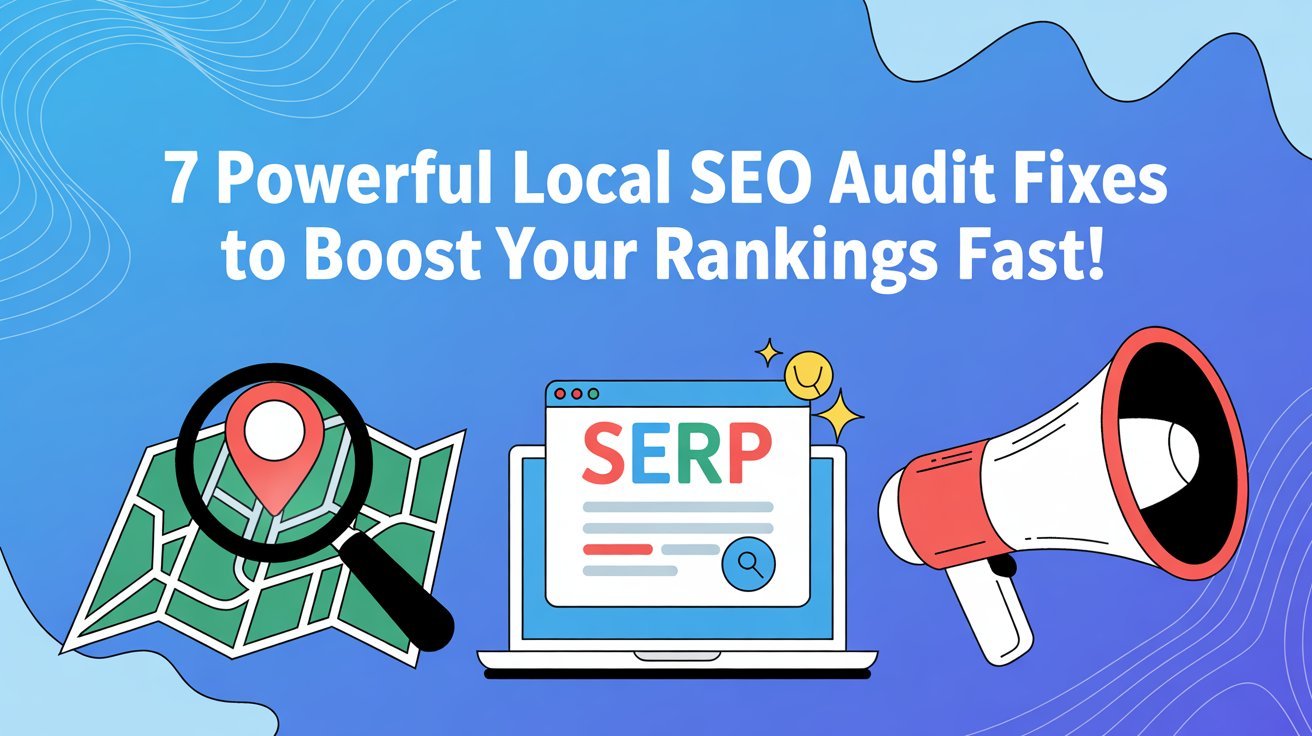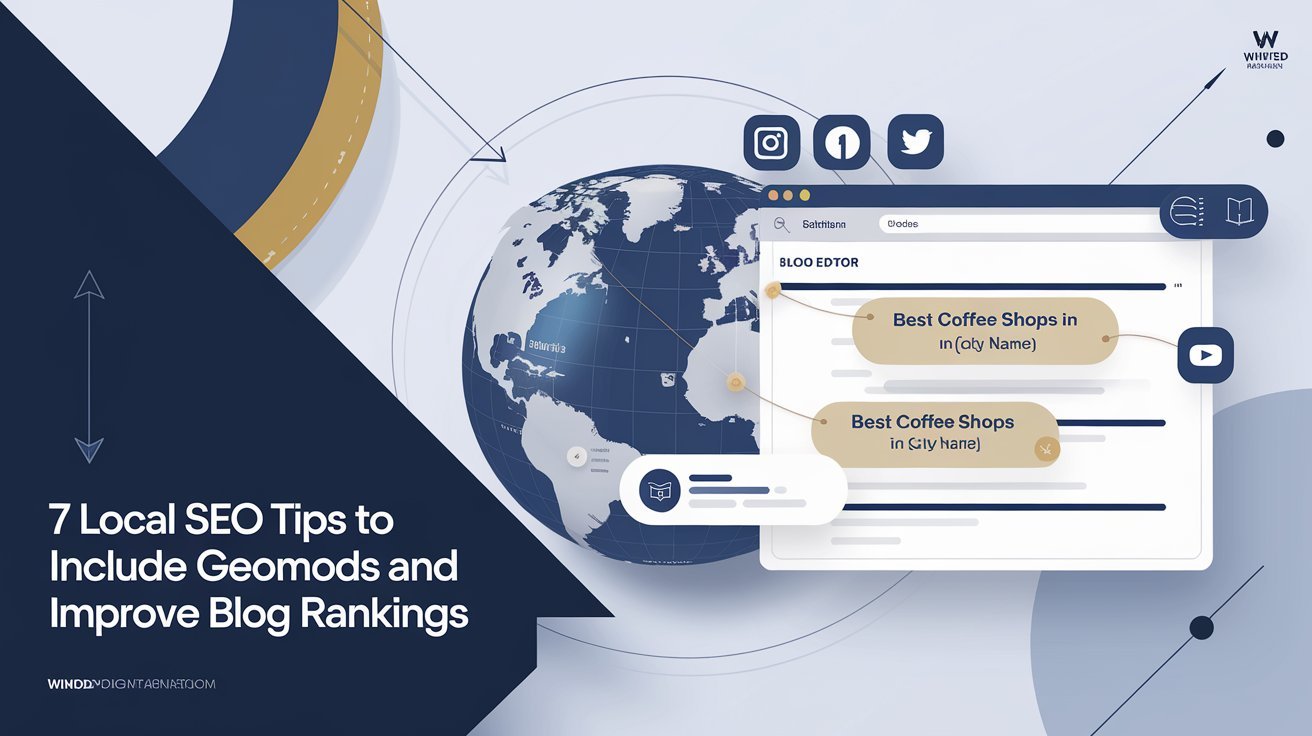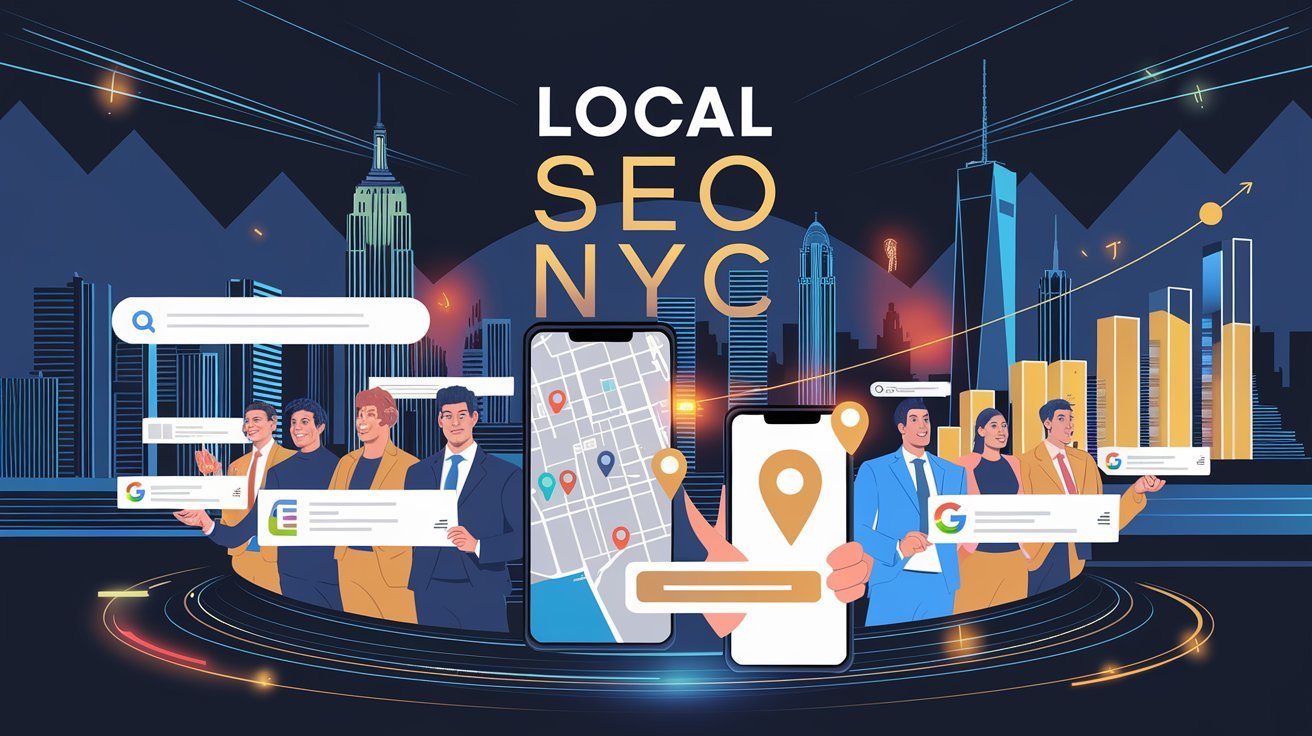In today’s competitive digital landscape, businesses must choose between Local SEO vs Traditional SEO to maximize their online presence. While both strategies aim to improve search visibility, they cater to different audiences and business goals. Understanding how to balance these approaches can lead to long-term success.
This article explores the differences between Local SEO vs Traditional SEO, their advantages, and strategies to combine them effectively for optimal results.
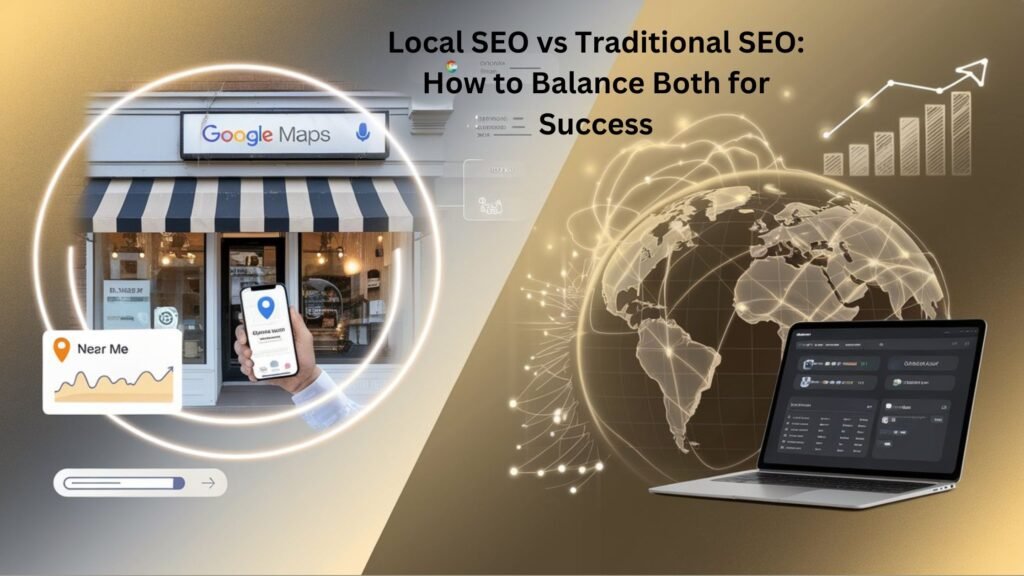
What is Local SEO?
Local SEO (Search Engine Optimization) is the process of optimizing a business’s online presence to attract more customers from local searches on search engines like Google. It helps businesses appear in “near me” searches, Google Maps results, and local search listings.
For example, if someone searches “best coffee shop near me”, Google will show nearby coffee shops with optimized local SEO.
Key Features of Local SEO
- Google Business Profile (GBP) Optimization
- Setting up and optimizing a Google Business Profile (GBP) ensures your business appears in Google’s local search results and Google Maps.
- Includes updating business hours, categories, photos, and descriptions.
- Local Citations & Directories
- Listing your business on online directories like Yelp, Bing Places, and Yellow Pages helps improve local search rankings.
- Consistent listings build trust with search engines.
- NAP Consistency (Name, Address, Phone Number)
- Ensuring that your business name, address, and phone number are the same across all platforms helps improve credibility and rankings.
- Customer Reviews & Ratings
- Positive reviews on Google and other platforms boost trust and improve search rankings.
- Responding to reviews enhances customer engagement.
- Location-Specific Keywords
- Using keywords like “best pizza in New York” or “Los Angeles plumbing services” helps businesses rank higher for local searches.
Benefits of Local SEO
Here’s your content in a table format:
| Benefit | Description |
|---|---|
| ✅ Higher Visibility in Local Searches | Optimized businesses appear in Google’s local pack (top 3 results shown in a map) and Google Maps results. |
| ✅ Improved Foot Traffic | Local SEO helps drive more customers to physical stores by making businesses easily discoverable online. |
| ✅ Better Conversion Rates | – Local searches often lead to immediate actions, like calling a business or visiting in person. – Customers searching locally are more likely to make a purchase. |
| ✅ Stronger Community Engagement | Engaging with local customers through reviews, events, and social media helps build trust and loyalty. |
What is Traditional SEO?
Traditional SEO, also known as organic SEO, is the process of optimizing a website to rank higher in search engine results pages (SERPs) on a broader scale. Unlike Local SEO, which targets location-based searches, Traditional SEO is ideal for businesses looking to reach a national or global audience.
For example, an e-commerce store selling fashion accessories worldwide would benefit from Traditional SEO, while a local bakery would focus on Local SEO.
Key Features of Traditional SEO
- On-Page Optimization
- Optimizing elements like meta titles, meta descriptions, headings (H1, H2, etc.), and URL structure to improve rankings.
- Ensures that content is search-engine friendly and easy to navigate.
- Keyword Research & Optimization
- Finding high-volume, relevant keywords that align with user search intent.
- Using keywords strategically in content, titles, meta descriptions, and image alt tags.
- Technical SEO
- Ensuring the website is technically optimized for search engines by improving:
- Site speed (fast-loading pages rank better).
- Mobile-friendliness (Google prioritizes mobile-first indexing).
- Schema markup (structured data that enhances search visibility).
- Ensuring the website is technically optimized for search engines by improving:
- Backlink Building & Domain Authority
- Earning high-quality backlinks from authoritative websites boosts rankings and credibility.
- Guest blogging, digital PR, and industry collaborations help in building strong backlinks.
- Content Marketing & Blogging
- Creating high-quality, informative content to attract and engage users.
- Blogging helps target long-tail keywords, drive traffic, and establish expertise.
Benefits of Traditional SEO
| Benefit | Description |
|---|---|
| ✅ Wider Reach | Targets a national or global audience, making it ideal for e-commerce, SaaS, and informational websites. |
| ✅ Long-Term Growth | SEO efforts lead to sustainable ranking improvements over time, unlike paid ads that stop when the budget runs out. |
| ✅ Increased Brand Authority | Ranking higher for relevant keywords helps businesses establish credibility and trust in their industry. |
| ✅ Higher Organic Traffic | Improves rankings on Google, Bing, and other search engines, attracting more website visitors without paid ads. |
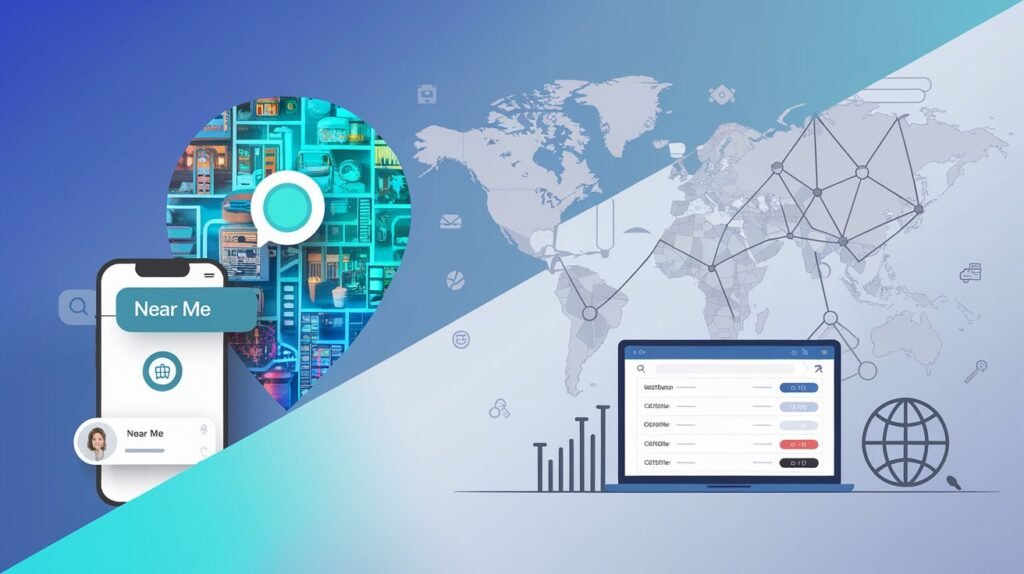
How to Balance Both for Success Local SEO vs Traditional SEO
To maximize online visibility, businesses should integrate both strategies. Here’s how:
1. Optimize for Both Local and Broad Keywords
Use a mix of location-specific and general industry-related keywords in website content, meta tags, and blogs.
2. Leverage Google Business Profile & Website Optimization
- Optimize Google Business Profile with accurate details, images, and updates.
- Ensure your website follows traditional SEO practices, such as fast loading speed and mobile-friendliness.
3. Build High-Quality Backlinks and Local Citations
- Acquire local citations through directories like Yelp, BBB, and industry-specific platforms.
- Earn authoritative backlinks through guest posting, partnerships, and content marketing.
4. Create Content for Both Local and General Audiences
- Publish location-based blogs (e.g., “Best Restaurants in NYC”).
- Write industry-related blogs (e.g., “Top Digital Marketing Trends”).
5. Monitor & Improve Your SEO Performance
Use tools like Google Analytics, Google Search Console, and local rank trackers to track progress and adjust strategies accordingly.
Differences Between Local SEO vs Traditional SEO
| Aspect | Local SEO | Traditional SEO |
|---|---|---|
| Target Audience | Local customers | National or global audience |
| Keyword Focus | Location-based keywords | Broad, industry-related keywords |
| Search Intent | Transactional (e.g., “near me” searches) | Informational and transactional |
| Google Business Profile | Essential | Not required |
| Backlinks | Local citations and directories | High-authority backlinks |
| SERP Features | Local pack, maps, reviews | Featured snippets, rich results |
Frequently Asked Questions (FAQs)
1. Which businesses should prioritize Local SEO?
Local businesses, brick-and-mortar stores, and service providers (e.g., plumbers, salons, restaurants) should focus on Local SEO.
2. Can an online-only business benefit from Local SEO?
Yes, if it targets specific regions and optimizes for local intent keywords.
3. How long does it take to see results with Local SEO vs Traditional SEO?
- Local SEO: 3-6 months
- Traditional SEO: 6-12 months (depends on competition and domain authority)
4. Is Traditional SEO still relevant for small businesses?
Yes! Even small businesses can gain authority and traffic by using content marketing, backlink building, and on-page SEO.
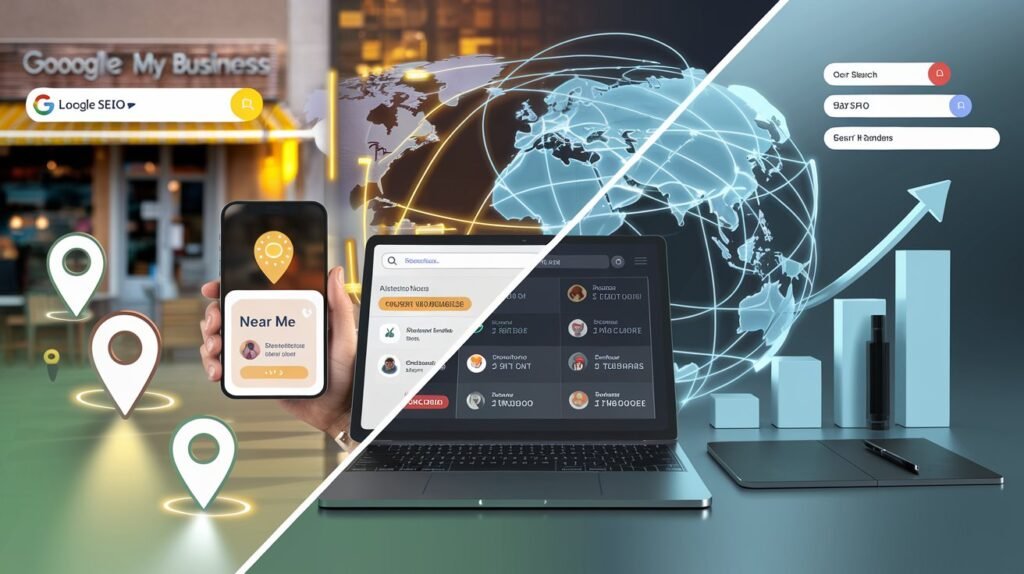
Conclusion
Both Local SEO vs Traditional SEO are essential for businesses aiming to grow online. While Local SEO enhances visibility in specific locations, Traditional SEO ensures long-term brand authority and traffic.
By integrating both strategies, businesses can maximize reach, attract local customers, and rank higher in search results. Focus on keyword optimization, quality content, backlink building, and technical improvements to achieve the best results. Learn more at Wisdom Digital Marketing.









